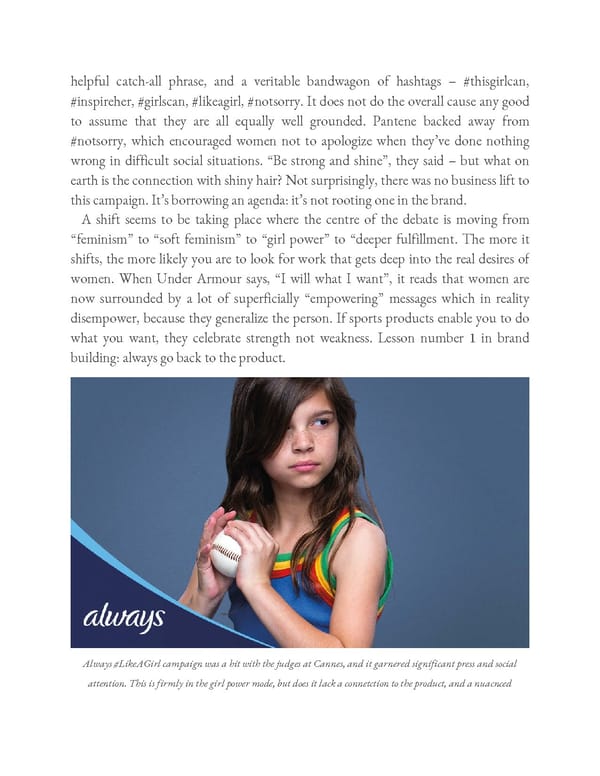helpful catch-all phrase, and a veritable bandwagon of hashtags – #thisgirlcan, #inspireher, #girlscan, #likeagirl, #notsorry. It does not do the overall cause any good to assume that they are all equally well grounded. Pantene backed away from #notsorry, which encouraged women not to apologize when they’ve done nothing wrong in difficult social situations. “Be strong and shine”, they said – but what on earth is the connection with shiny hair? Not surprisingly, there was no business lift to this campaign. It’s borrowing an agenda: it’s not rooting one in the brand. A shift seems to be taking place where the centre of the debate is moving from “feminism” to “soft feminism” to “girl power” to “deeper fulfillment. The more it shifts, the more likely you are to look for work that gets deep into the real desires of women. When Under Armour says, “I will what I want”, it reads that women are now surrounded by a lot of superficially “empowering” messages which in reality disempower, because they generalize the person. If sports products enable you to do what you want, they celebrate strength not weakness. Lesson number 1 in brand building: always go back to the product. Always #LikeAGirl campaign was a hit with the judges at Cannes, and it garnered significant press and social attention. This is firmly in the girl power mode, but does it lack a connetction to the product, and a nuacnced
 Ogilvy on Advertising in the Digital Age Page 121 Page 123
Ogilvy on Advertising in the Digital Age Page 121 Page 123